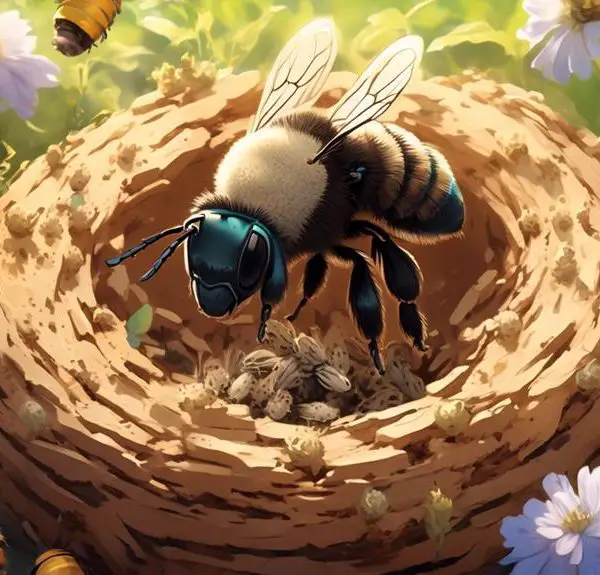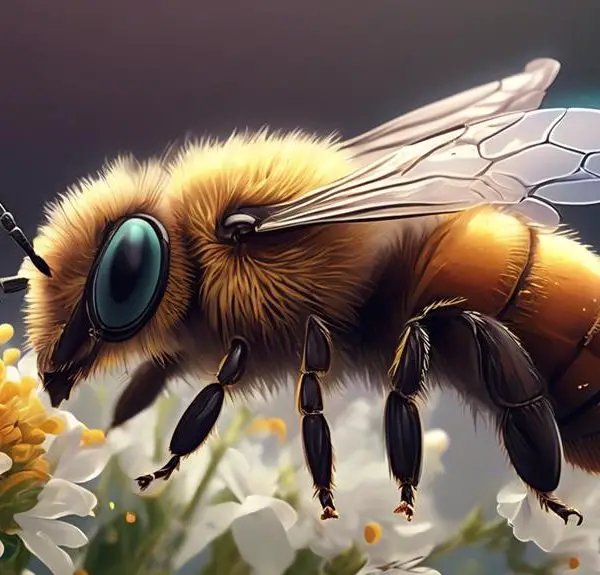Keep reading to uncover the truth about whether mason bees really drill holes in your firewood or if it's all just buzz.
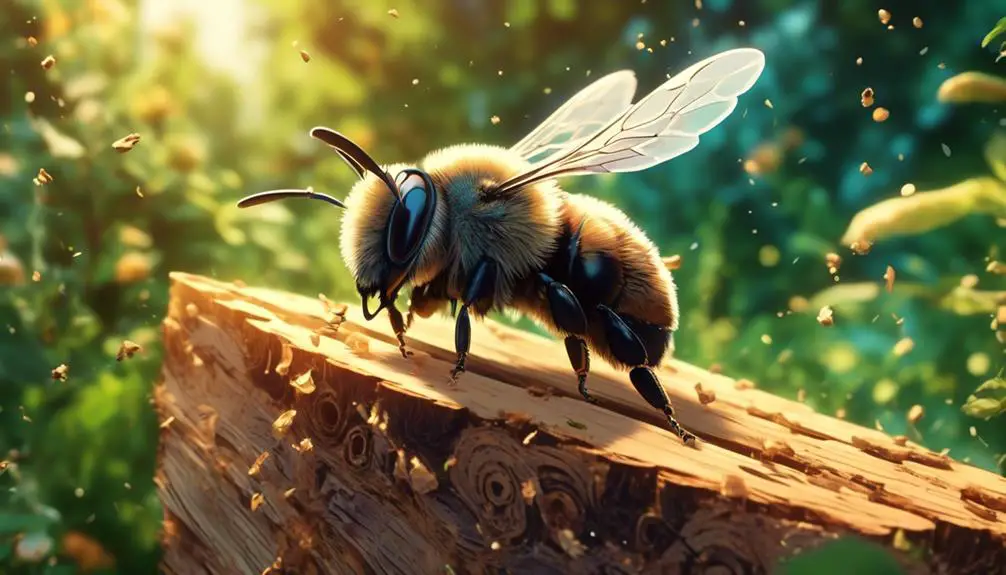
Do Mason Bees Drill Holes in Firewood?
Navigating the world of nature's little builders, like mason bees, can often feel like threading a needle in a haystack. You've probably heard the buzzing rumors about these industrious insects drilling holes in firewood, but do they really?
Let's take a moment to clear up this buzzing question. Are your stacks of firewood a potential home for these hardworking creatures, or is this just another misunderstood aspect of their behavior?
Stick around, and we'll dissect this intriguing question together.
Key Takeaways
- Mason bees do not drill their own holes in firewood, but utilize pre-existing holes.
- Firewood's rough surfaces and insulation properties make it attractive for mason bee nesting.
- Properly storing firewood can prevent mason bee infestations.
- Mason bees are gentle, beneficial pollinators that play a crucial role in ecosystem health.
Understanding Mason Bees' Behavior
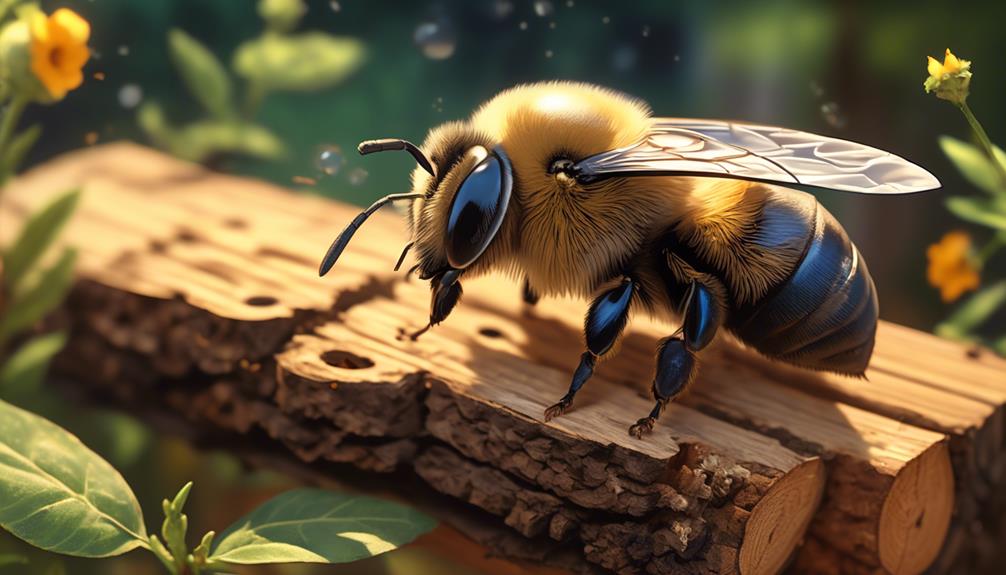
To truly appreciate the complexity of mason bees, it's essential to delve deeper into their intriguing behavior patterns. Unlike honey bees that live in colonies, mason bees are solitary insects. Each female is fertile and makes her own nest, usually in hollow reeds or holes in wood made by other insects. They're called 'mason' bees because of their unique practice of using mud or other 'masonry' products to construct their nests.
You might be surprised to learn that mason bees are non-aggressive. They're unlikely to sting unless they're trapped or squeezed, making them an excellent neighbor for your garden. They're also super pollinators. One mason bee can do the work of 100 honey bees, which is quite an impressive feat.
Now, you're probably wondering about their relationship with firewood. Mason bees don't actually drill holes in wood. Instead, they repurpose existing holes for nesting. So if you're noticing holes in your firewood, it's probably not the work of mason bees.
Understanding these behaviors can help you better appreciate these hardworking, friendly insects and their important role in our ecosystem.
Mason Bees and Their Nesting Preferences
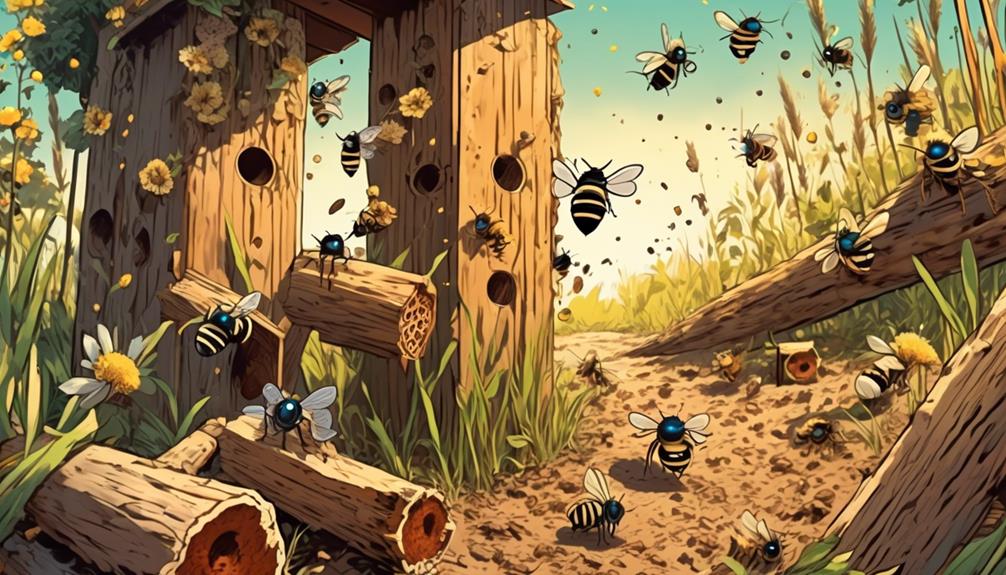
In the realm of mason bees, their nesting preferences are as unique as their solitary lifestyle, often seeking out existing holes in wood or hollow reeds for their humble abodes. Unlike honey bees that live in colonies, mason bees are solitary creatures. They don't construct hives but rather inhabit pre-existing cavities for their nests.
You'll find them occupying holes in trees, wooden blocks, or even dead plant stems. They're not picky about the hole's origin. In fact, they won't bore into the wood. If the hole's there, they're likely to take up residence. Their primary concern is the diameter of the hole, which must be just right, typically around 1/4 inch.
Once they've found the perfect spot, they get to work. They lay their eggs inside, and using mud, they construct tiny rooms or 'cells' for each egg. These mud partitions give them their name – Mason Bees. It's a meticulous process, ensuring the safety and survival of their offspring.
The Link Between Mason Bees and Firewood
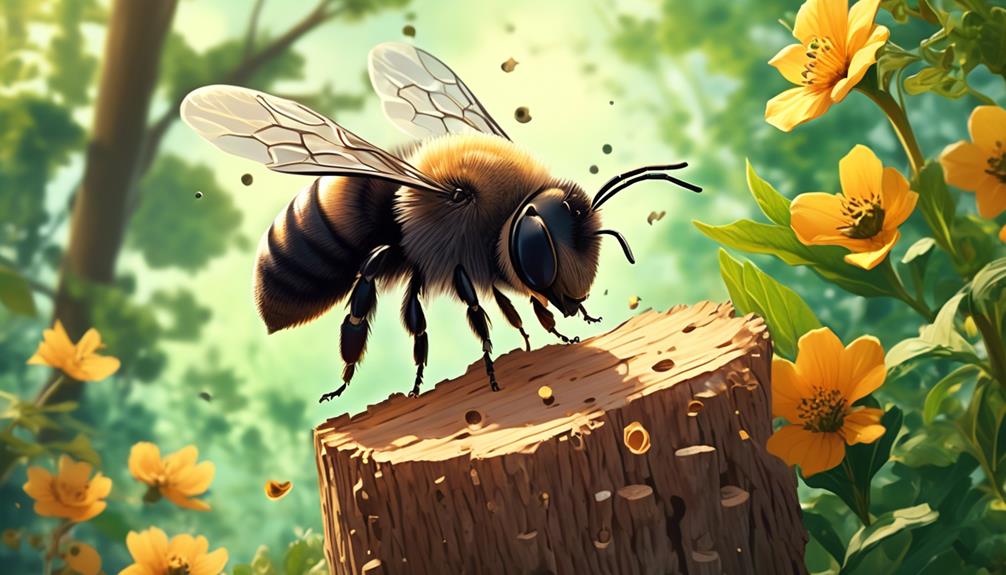
You might be wondering how firewood fits into the life of mason bees; well, stacks of cut wood can often provide the perfect dwelling for these solitary insects. Firewood, particularly if it's been cut into small logs, can mimic the natural environment of mason bees. They're drawn to the cracks and crevices in the logs, which they view as potential nesting sites.
These bees don't actually drill holes into the wood. Instead, they seek out pre-existing holes, often made by other insects or natural weathering. Once a suitable hole is found, the female mason bee lays her eggs inside. She then seals the hole with mud, hence their name. This provides protection for the developing larvae, keeping them safe from predators and harsh weather conditions.
Firewood is particularly attractive to mason bees, as the logs' rough, uneven surfaces offer numerous hiding spots. Moreover, the wood's natural insulation properties help maintain optimal temperatures for the larvae's development. Therefore, if you're storing firewood and find it dotted with tiny mud-sealed holes, the chances are high you have a mason bee colony in your midst.
Common Misconceptions About Mason Bees
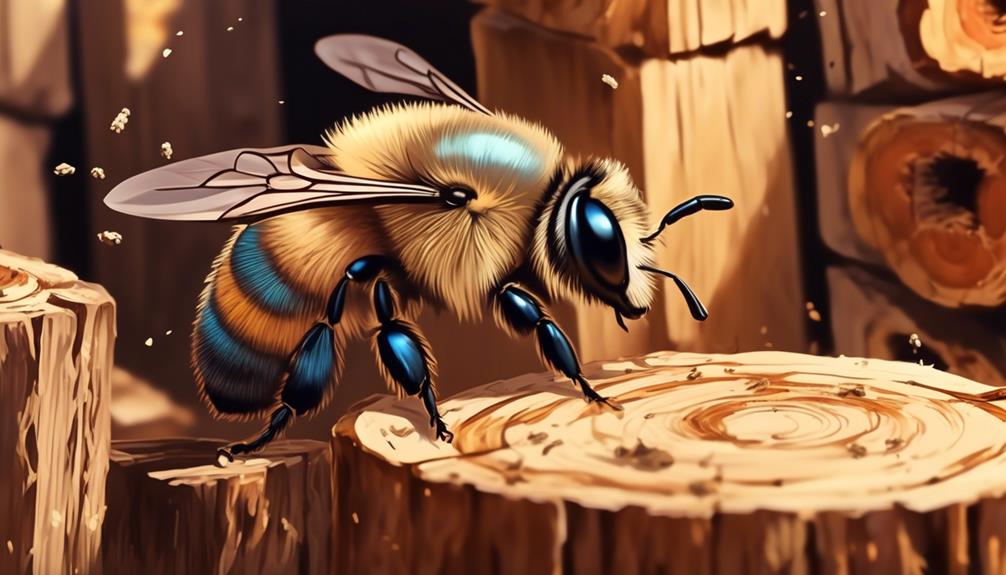
While it's fascinating to observe mason bees' unusual nesting habits in firewood, there's a wealth of misconceptions surrounding these industrious creatures that need addressing.
For starters, you might think that mason bees drill their own holes in wood, but they don't. They're opportunists, not woodworkers. They inhabit pre-existing cavities, which can be found in decaying firewood, but they're not the ones creating those holes.
Another common fallacy is the idea that mason bees are aggressive. In fact, they're among the most docile of all bee species. Unlike honey bees, they don't have a hive to protect and are far less likely to sting unless severely provoked.
You may also have heard that mason bees are a nuisance and destroy wood structures. This is a gross exaggeration. While carpenter bees can cause damage by boring into wood, mason bees don't have this ability. They seek out abandoned beetle holes or other natural crevices.
Lastly, some people believe mason bees produce honey. They don't. They collect pollen and nectar for their larvae, but don't produce surplus honey like their honey bee cousins.
Recognizing these misconceptions can help you appreciate these gentle, beneficial pollinators.
How to Properly Store Firewood
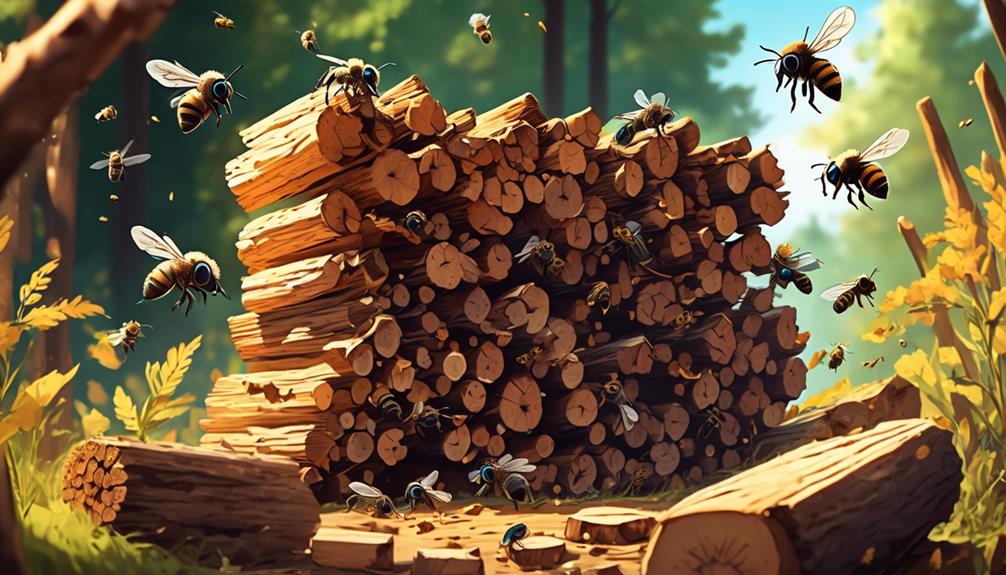
Keeping your firewood properly stored isn't just about maintaining a tidy yard; it's crucial for preventing decay and deterring insects, including mason bees, from nesting.
Firstly, don't stack firewood directly on the ground. Elevate it on pallets or a firewood rack to allow air circulation, which aids in drying and prevents moisture absorption. Secondly, cover only the top of the pile to protect it from precipitation, but leave the sides exposed for ventilation. Thirdly, store firewood at least 30 feet away from your home or wooden structures to prevent pest infestations.
Here's a table summarizing these key points:
Tips | Why it's Important | Emotional Response |
|---|---|---|
Elevate firewood | Prevents moisture absorption | Peace of mind |
Cover only the top | Allows ventilation | Satisfaction |
Store away from home | Deters pests | Relief |
Conclusion
In conclusion, you've learned that mason bees don't drill holes in firewood. They prefer pre-existing cavities for nesting. The misconception likely stems from seeing them around firewood piles, which often harbor their favorite spots.
To avoid any potential bee-related issues, store your firewood properly.
Remember, these bees are important pollinators, so understanding their behavior helps us coexist better with our buzzing buddies.

